Zambia's 'Tripod Lions' Find A New Lease Of Life In The Kafue National Park
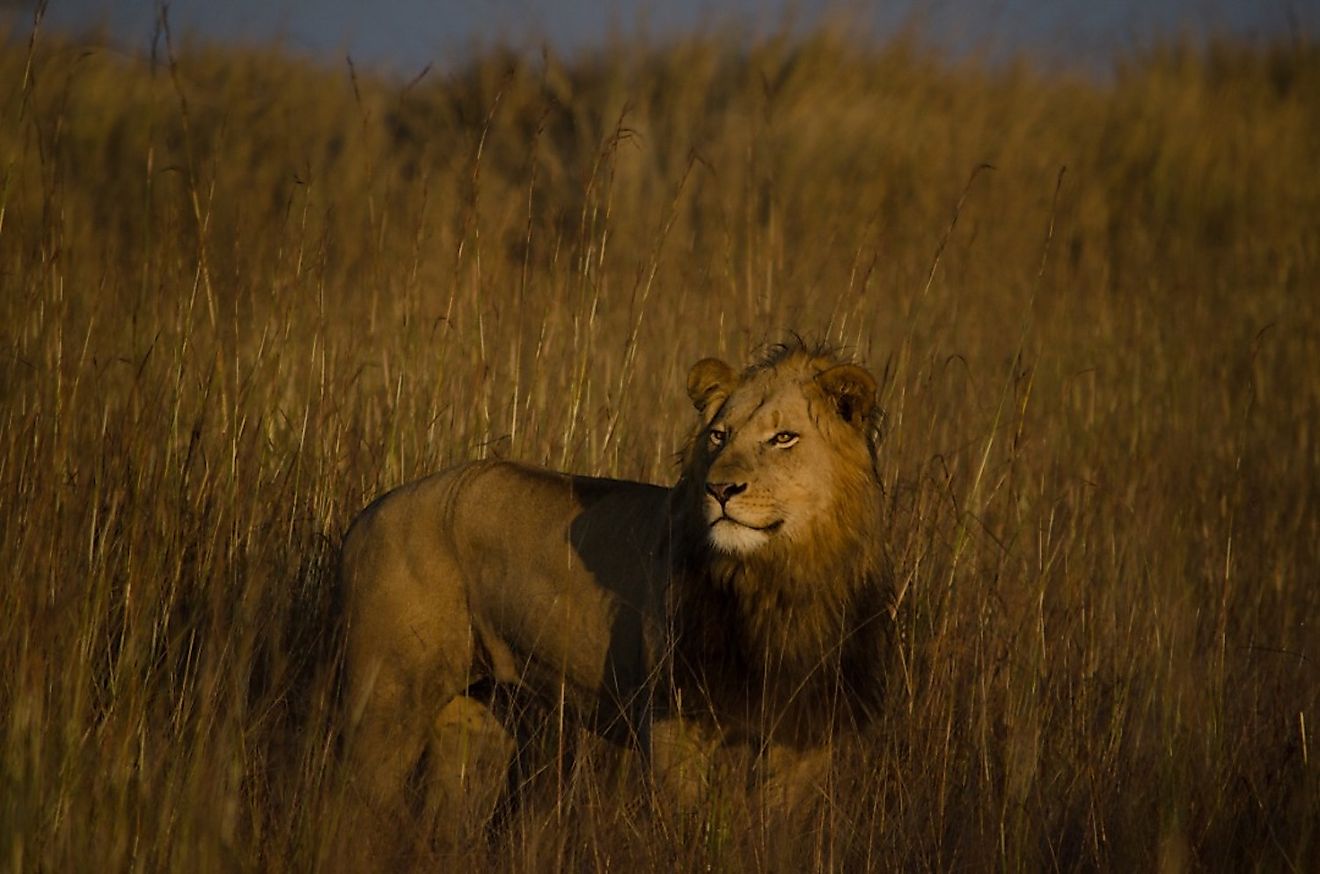
In the vast landscape of the Kafue National Park in western Zambia, bushmeat snaring has imperiled the conservation of the park's lions and other wildlife. Over the years, this brutal activity has maimed or killed several lions in the park. It has also created the "injured and tripod" of Kafue, victims of snaring some of who have lost a limb but managed to survive the ordeal.
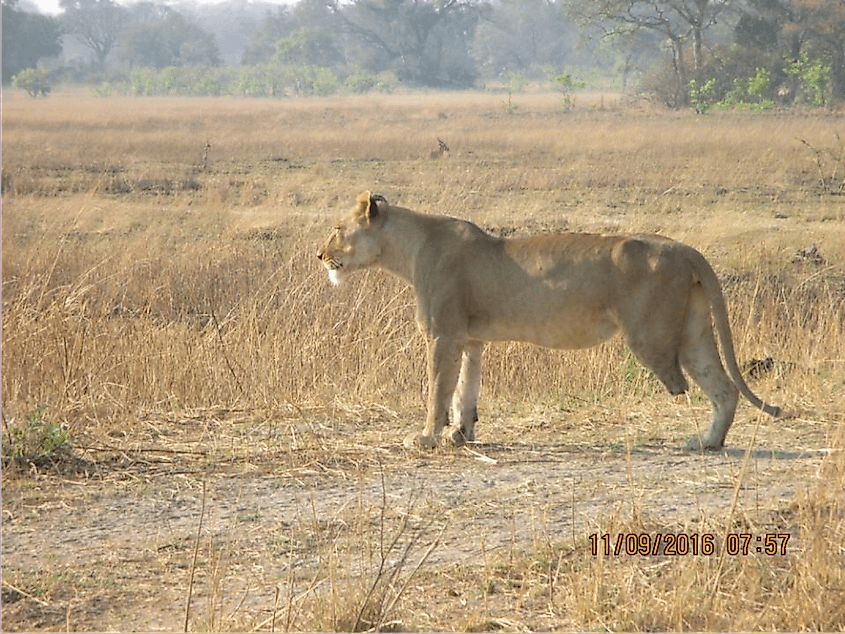
In 2017, drawn by the tragic plight of these big cats, Panthera (the global wild cat conservation organization) in partnership with Zambia’s Department of National Parks and Wildlife (DNPW) and the Zambian Carnivore Programme (ZCP), launched a massive program to curb poaching in the park. Named the Kafue Law Enforcement and Wildlife Support program (KLAWS), it aimed to "klaw" back Kafue's wild spaces for its rightful owners - the wildlife of the national park. Today, KLAWS has made great strides in the direction. To date, it has convicted 246 poachers, removed 1,563 snares, and destroyed 289 poachers' camps. It has also provided a more secure home to Kafue's snares lion survivors like "The Queen" and their progeny like "Shy" to survive and thrive.
"Our program, the Kafue Law Enforcement Support Program, has steadily helped to significantly decrease poacher activity in intensive protection zones within the park, which leads to critical protection of the lives of threatened lions and other wildlife," Dr. Kim Young-Overton, KAZA (Kavango-Zambezi Transfrontier Conservation Area) Program Director for Panthera, informed World Atlas.
The Evils Of Bushmeat Snaring
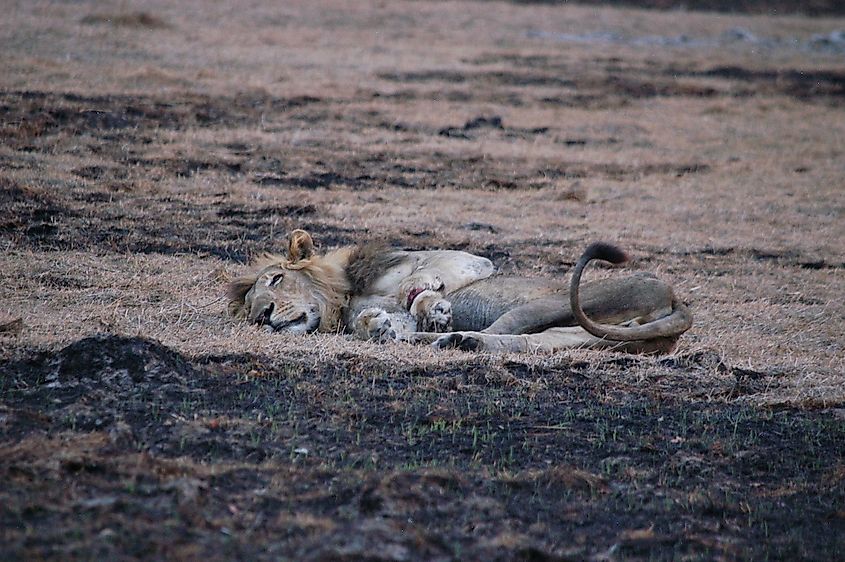
A snared lion in the Kafue National Park. Image credit: ZCP
Only a century ago, Africa was the proud home to over 200,000 lions. Today, these big cats are found in less than 5% of their historic range and have been eliminated from 26 African nations. Their numbers have declined catastrophically with only around 20,000 of these big cats surviving in the African wilds. They too are quietly disappearing.
Threats to these lions are numerous and growing. Habitat loss and fragmentation, unsustainable trophy hunting, and persecution by local communities angered by livestock depredation are all contributing to the demise of the African lions. But towering above all is the illegal hunting of lion prey for bushmeat and lions themselves for trade of their body parts.
While local African communities have hunted the continent's wildlife on a subsistence basis for thousands of years, the poaching of lions was never so intense as it is now. Rapidly expanding populations, organized commercial bushmeat trade, and a flourishing black market for lion body parts in some Asian countries is catalyzing the extermination of the lions faster than ever before.
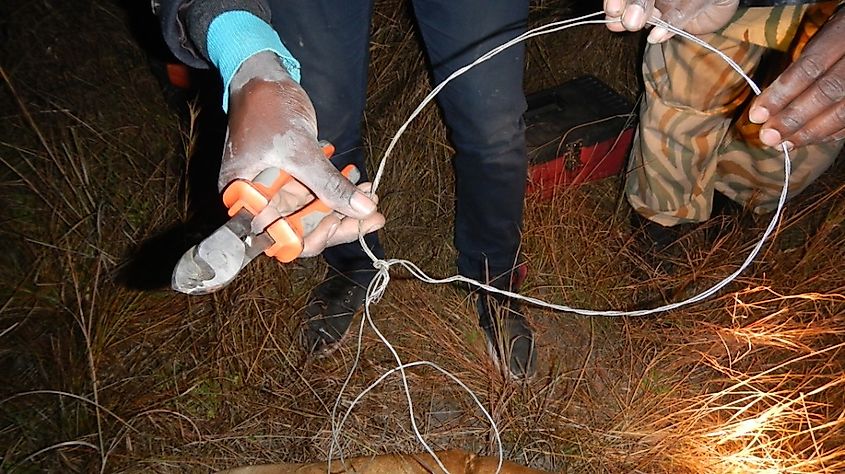
Snaring is one of the most common techniques of trapping wildlife and these predators in the continent. Easy to make and inexpensive, silent but vicious metal wire snares are laid down to ensnare the unlucky animal. Once caught, the animal might take days to die. In the absence of water and food, it starves and gets dehydrated. It also becomes susceptible to attacks by other animals. The wounds caused by the snare become infected and the animal suffers a cruel and painful death.
In 2017, 186 surveys in 24 African nations revealed that bushmeat poaching was the number one threat to lions in the surveyed countries. While lions often get trapped accidentally in snares set out to catch herbivores, sometimes these predators are also the prime target of illegal hunting operations. A 2017 study by a conservationist during his doctoral research exhibited that after buffaloes and zebras, lions were the most preferred catch of bushmeat hunters.
Kafue's Tripod Lions Meet With A Good Fortune
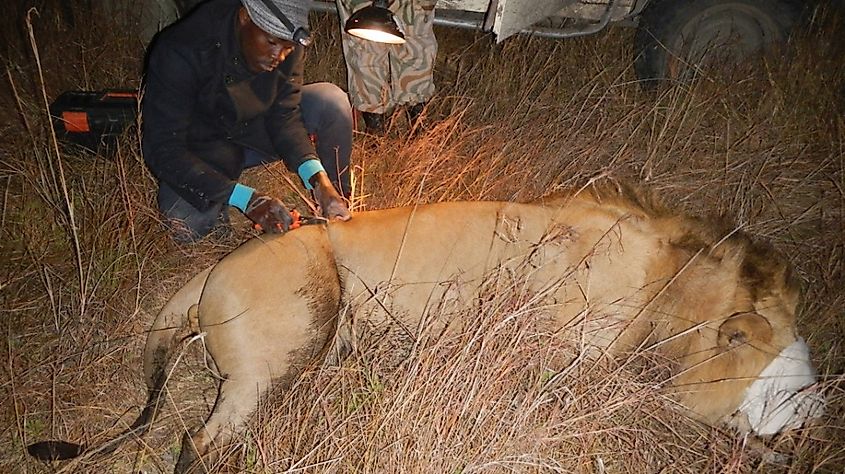
The desnaring of Shy in 2017 by ZCP AND DNPW at the Kafue NP. Image credit: Jonah Gula
Like most of Africa, Kafue National Park's wildlife and lions also suffered the same fate for years. However, their fortune changed for the better when Panthera began supporting DNPW together with ZCP as a joint conservation team.
In 2012, the team managed to save a lioness from a snare. Named the "Queen" of the Papyrus Pride, this tripod lioness who lost a limb to the snaring incident, soon successfully bore cubs. "Shy," a male cub, was one of them. As he grew up to become a sub-adult, Shy, like most young male lions, left the pride to establish one of his own.
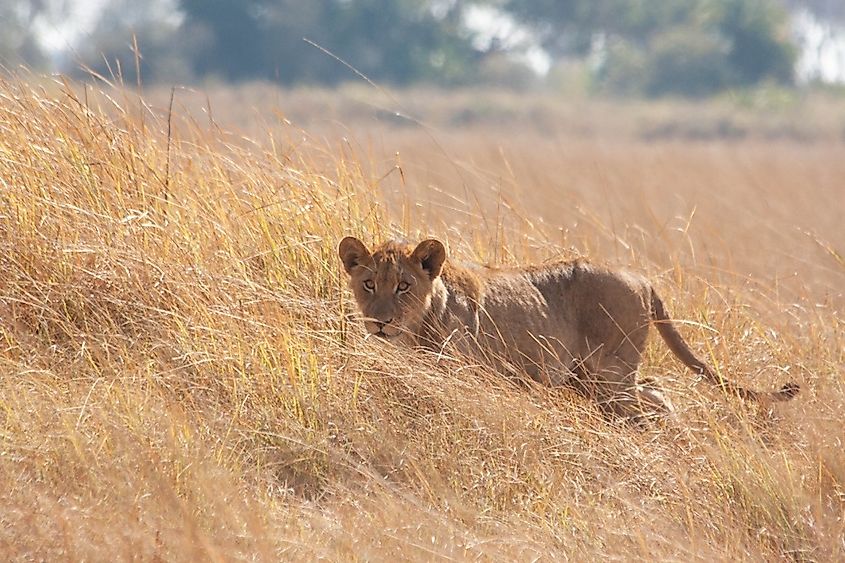
Shy as a cub in the Kafue NP in 2014. Image credit: Caz Sanguinetti (ZCP)
In 2017, he too met the same fate as his mother. He was caught in a snare but later desnared by ZCP and DNPW. The next year, he fathered cubs with the Moshi pride. His luck ran out once again and he was ousted from the pride by a stronger competitor. After searching for a place of his own and traveling long distances, Shy finally managed to rule the Hook Bridge Pride and became the proud father of cubs with the Hook Bridge Lioness.
While the above story of "Queen" and "Shy" ends with a happy note, it also displays the extreme vulnerability of the African lions to bushmeat snaring. Both mother and son became victims of the same torturous killing method. Luckily for them, however, they were rescued before it was too late.
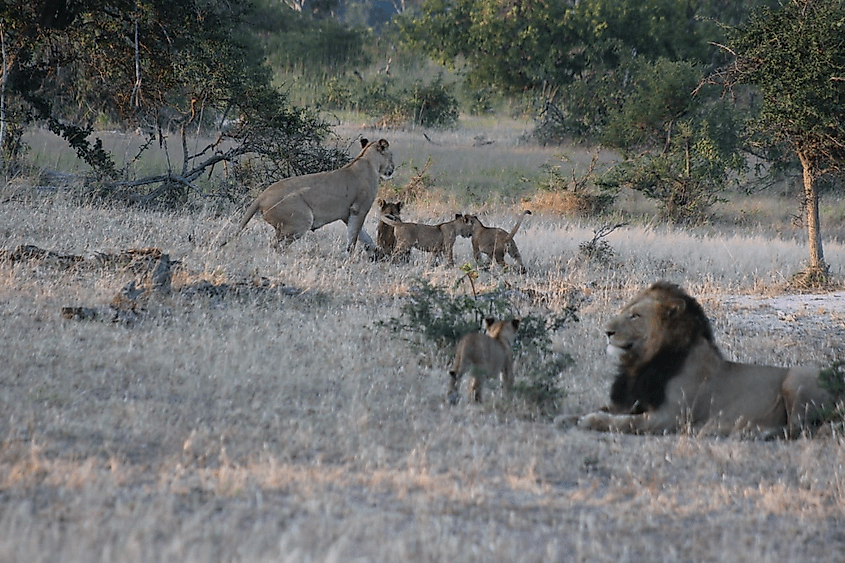
Today, the anti-poaching teams supported by the KLAWS program are diligently working towards the goal of securing the Kafue National Park for these lions and their progeny. The implementation of the latest technology for monitoring and reporting wildlife crimes, and the creation of lockdown zones to eliminate poachers from the park are all steps that have greatly benefitted Kafue's wildlife.
The success of the KLAW program is visible in the decrease in the number of animals injured or maimed by snares as compared to the years before its implementation. But the story does not end here in a happily-ever-after.
The Pandemic's Ruthless Impact On Conservation Efforts
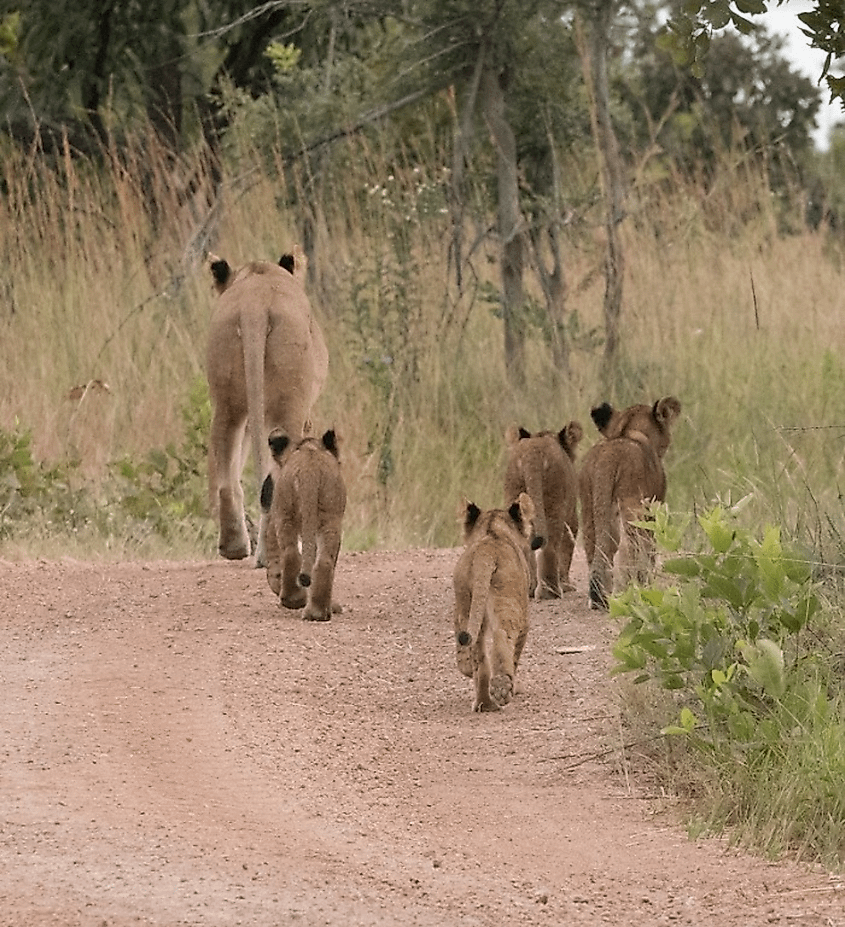
The COVID-19 pandemic that struck every country in the world also derailed wildlife conservation in Africa. As the pandemic-triggered lockdowns and other measures were implemented, wildlife tourism in the continent suffered a major blow. In a world region riddled with crises, the economic downturn as a result of the pandemic had an immediate harsh effect on its wildlife conservation scenario. News of a rise in poaching incidents poured in from all corners of Africa. Kafue was no exception to this as mentioned by Dr. Young-Overton.
"In Kafue National Park we are seeing an increase in poachers accessing intensive protection zones that were previously secured. The near-collapse of the tourism sector has further increased poverty in regions surrounding protected areas. Poachers have been emboldened by need. The lack of tourism activity has reduced the presence of tourism operators providing eyes and ears on the ground, thus leaving important wildlife areas that used to be regularly frequented by tourism activities open to poaching. Given that our program is integrated with these activities, conservation personnel are struggling to be present across large swaths of prime lion habitat where tourism operators used to be present. This, combined with an increase in bushmeat poaching (unlawful harvest of herbivores for the illegal bushmeat trade) and increased targeted poaching of lions for lion body parts, has left lion prides extremely vulnerable to prey depletion, snare injuries and direct killing during this pandemic crisis," she explained the ill-effects of the pandemic on Kafue's wildlife.
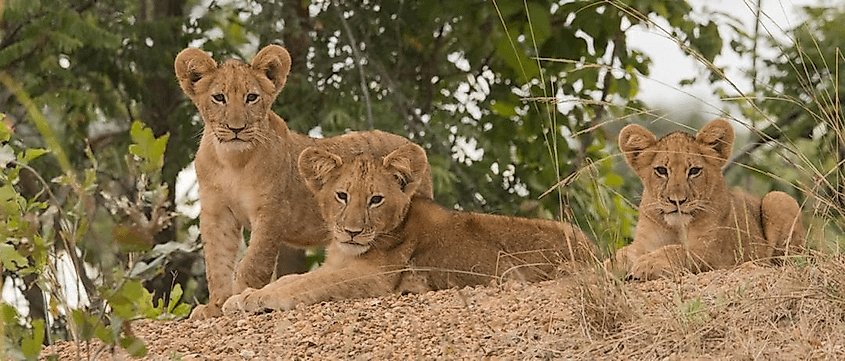
"In Kafue NP we have already lost two lions to poachers from known prides in prime lion habitat and are battling with increased numbers of snares. We are preparing for further losses as the effects of the pandemic deepen poverty, tourism activities remain at near zero and the value of lion body parts increases and/or illegal markets become more available. The death or injury of even one key member of a pride, or particularly a pride male, can have significant effects on population size resilience, eg if the pride male is killed the cubs can be subject to infanticide and subadults driven out by a new male," she further stated.











